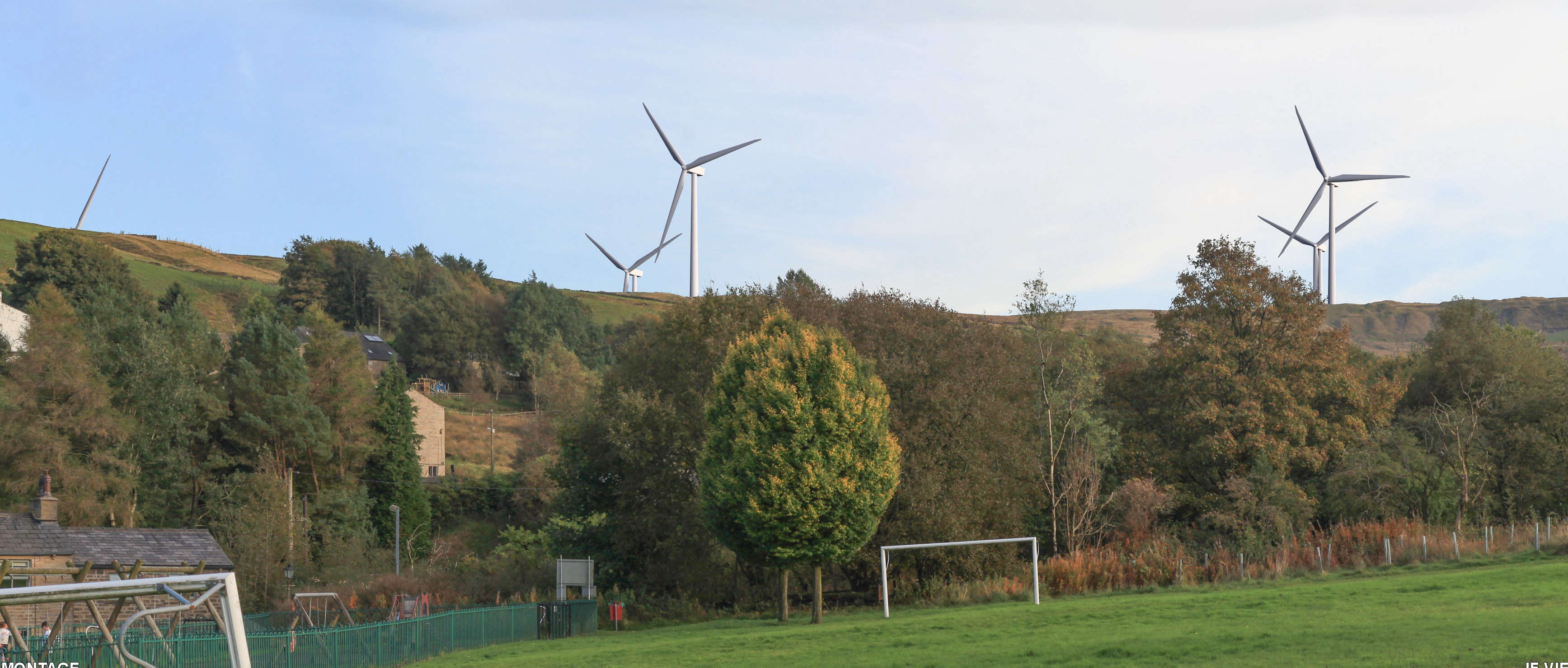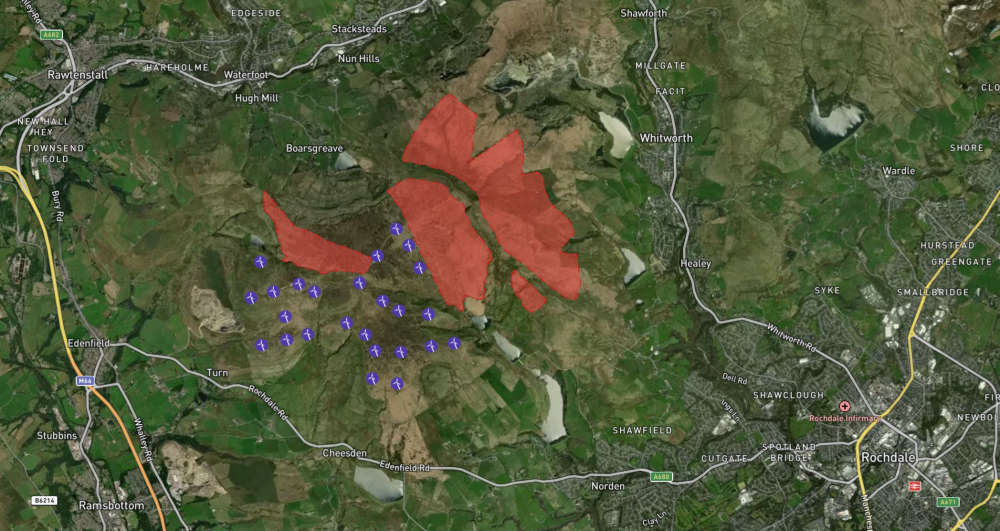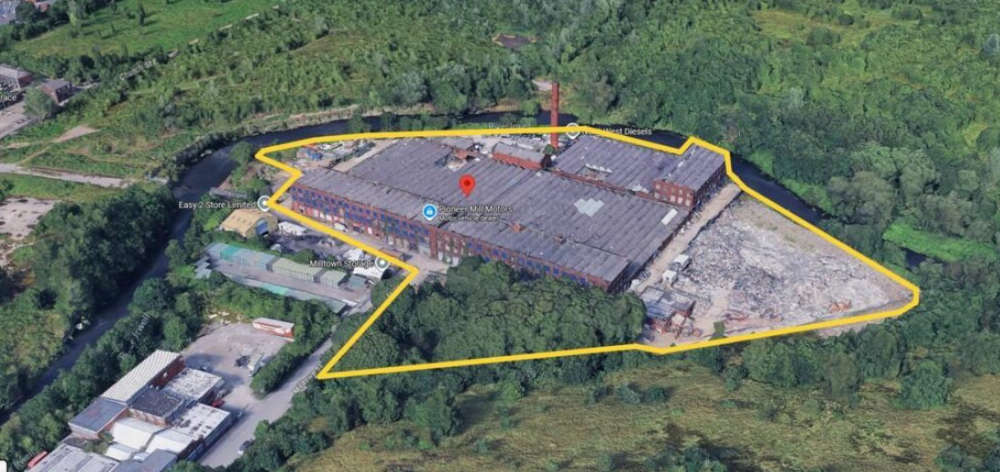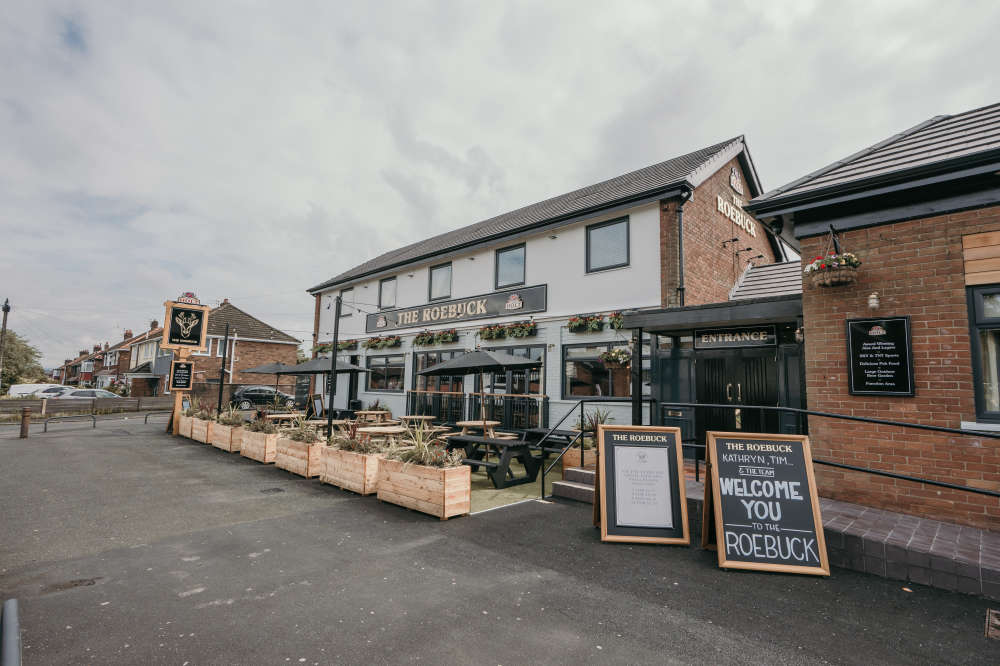
Towards the horizon north of Manchester sits a picturesque view of wind turbines rotating slowly above the crest of the hills.
Towards the horizon north of Manchester sits a picturesque view of wind turbines rotating slowly above the crest of the hills.
For many city folk, this is a familiar far-off rural landscape view. But for those living closer to the white giants it has been a battleground over the last two decades.
Now plans to build 17 bigger, more powerful, wind turbines have officially been submitted by renewable energy developer Cubico Sustainable Investments.
In the mid-2000s, plans had been submitted to build 26 wind turbines on a large moorland area between Rochdale and Rossendale. That Scout Moor Wind Farm project sparked the beginning of a turbulent saga that was reignited when Cubico revealed their intentions last year.
Now, almost 20 years later, people in Rochdale, Edenfield, and Rawtenstall are faced with yet another proposal – and this one has been billed as England’s biggest onshore wind farm yet.
The project, named ‘Scout Moor II’, would see 17 wind turbines built next to the ones already standing on the moorlands capable of generating 100MW of clean electricity, powering around 100,000 homes per year. This is around 10 per cent of Greater Manchester’s needs, according to Cubico.
The plans originally touted 21 turbines, but following public consultation they were scaled down to 17. Cubico insists this will still be England’s biggest onshore wind farm, despite the scale back, as it would be able to generate more electricity than any other in the country.
Cubico says these plans mark a significant step in helping the country meet its climate goals, reduce reliance on imported energy, and unlock the full potential of homegrown renewables.
Campaigners from the local areas surrounding Scout Moor are skeptical though. The ‘Say NO to Scout Moor 2’ group believe these new turbines will be higher than Blackpool Tower, dominate the valley’s skyline, and provide little benefit to the environment.
One of their biggest concerns is the destruction of the peatland and the construction of the turbines, which they don’t believe can be reversed by Cubico’s promise of a major moorland restoration scheme.
The renewable energy developer says the project would focus on improving and protecting the unique peatland across the site; rewetting the moor; restoring native vegetation; and improving habitats for local wildlife.

Interactive map showing where the new Scout Moor II wind turbines could be built
Cubico has also proposed a long-term Community Wealth Fund, delivering £20 million over the lifetime of the wind farm. It would offer a guaranteed £600,000 per year, linked to inflation, and based on £6,000 per MW of installed capacity.
If three per cent of the wind farm’s gross annual revenue exceeds this amount, the higher figure will be paid instead. The fund will be managed by a newly formed and independent Scout Moor Development Trust, chaired by a community liaison group made up of local representatives. Its purpose is to invest money back into the local community.
Peter Rowe, development manager at Cubico said: “Scout Moor II is a chance for Rossendale and Rochdale to lead the UK into a clean energy future – creating jobs, supporting the local economy and backing Britain by producing secure, homegrown energy.
“We’ve been listening closely to what people have told us during the consultation process, and we’re incredibly grateful to everyone who has taken the time to engage with us.
“Their input has shaped a stronger scheme that we believe delivers for local communities and supports national energy goals.
“We understand that new developments like Scout Moor II raise important questions, and that local communities must see real and lasting benefits. We’re committed to working closely with the Council, community groups and residents as the process moves forward.”
Alan Billingsley, from the Say NO to Scout Moor 2 group, is not buying the claims made by Cubico – even when it comes to the amount of electricity they can generate. His group have done their own calculations, suggesting that the wind farm could only generate the electricity to power 100,000 homes if the turbines regularly worked to maximum capacity.
The campaigners have questioned what the real number is, if you factor in days of low wind. They are also worried about the noise these turbines generate; what happens to the heritage and artefacts found in the area; as well as the subjective matter of how they look.
Some people like the look of wind turbines, others don’t. One man very much on the ‘don’t like’ side of this marmite argument is American President Donald Trump – who declared his loathing of wind turbines in recent weeks.
Although there is no affiliation between Mr Trump and Say NO to Scout Moor 2, they can at least agree on their viewpoints about wind turbines.
Alan added: “They will dominate this valley far and wide. No area will escape this harm to our treasured moorland landscape and heritage.
“We all want to protect the planet, have clear air, clean water and to reduce waste and pollution. However, despite its size, this wind farm will have no impact on global warming.
“In fact, by digging up our peat and replacing it with thousands of tonnes of concrete, it could make emissions worse. And that’s not even considering the potential impact on water courses and flooding.”
These arguments are all too familiar to what the area has seen before. Campaigners have seen successes and failures previously.
Whether they will achieve their ambitions this time in stopping Scout Moor II will rest in the hands of the planning committees of both Rochdale and Rossendale councils.
The long drawn out saga
Local politician Coun James Gartside has represented the village of Norden since the 1980s.
Back in the mid-2000s when the first wind farm was tabled by Peel, the Norden councillor was amongst the many people opposing the plans in his area as well as other villages on the periphery of the moors.
They even managed to rope in television presenter, author and environmental campaigner David Bellamy to stop the new turbines. The campaigners feared the high level of concrete used to keep the turbines standing would have irreversible damage to the peatlands in the area.
Despite their best efforts to stop Scout Moor Wind Farm happening, planning permission was granted in 2005 and construction started in 2007. However, when plans were submitted to double the wind farm’s size in 2011, campaigners were successful in getting it stopped.
“The opposition was still just as strong the second time around,” Coun Gartside explained previously. “We managed to get that one stopped though.”
Peel then launched plans for a second site. Those plans never really got off the ground, but in 2015 a new scheme for 16 more turbines was submitted by Scout Moor Wind Farm Expansion Ltd.
Reports at the time said Peel Energy and United Utilities had put together a ‘scaled back’ version of the 2011 plans – which created an outcry locally.
This time the Conservative government got involved and brought in new planning rules that effectively ruled out new onshore wind farm developments.
Those rules have now been eased, so Scout Moor II marks the first major onshore wind farm development in England since the original plans were shelved a decade ago.
The push towards green energy is something the new Labour government is keen for. The government now has support for onshore wind and a commitment to urgently address climate change and meet its net zero targets – with a focus on delivering a cleaner, more sustainable future.
Cubico Sustainable Investments, who have just submitted the latest plans at Scout Moor, think their development is the answer.
The next steps
Cubico claims this new wind farm, which is separately run to the current Scout Moor site, could generate an estimated £200 million of investment and hundreds of skilled green jobs.
Before that can happen the developers need to generate data to see if the site is capable of hosting a wind farm of this scale. Now they have permission to erect a 91m meteorological mast to assess environmental conditions on the moorland.
Two years of wind data is required before construction of the main wind farm can begin. The mast would also help Cubico in securing funding for the wind farm, which they hope to build by 2030.
Currently Cubico will now have to wait on the first round of planning permission to be approved. The developer says they are working closely with both Rossendale and Rochdale councils to ensure prompt validation of the applications and further information will be published in due course.
They say further public consultation and engagement will take place as part of the planning process, and the proposals may be updated based on feedback from both statutory consultees and local communities.
Henri Murison, chief executive of the Northern Powerhouse Partnership, said: “Research by Cambridge Econometrics has shown we need around £7bn a year of private sector investment in energy generation technologies across the North if we’re to meet future energy demand, create skilled jobs in supply chains, and fulfil our Net Zero commitments.
“This project will help meet the growing electricity needs of both Lancashire and Greater Manchester over the coming decades to charge electric vehicles, power heat pumps, and support industry.
“Onshore wind will help cut bills by reducing our reliance on gas, which, as the war in Ukraine demonstrated, leaves families and businesses vulnerable to global price shocks.
“As seen in similar projects across the North and in this project specifically, it is possible to strike the right balance between the concerns of local communities and protecting nature while delivering the energy infrastructure we all depend on.”


 Live music debuts at Theatre Royal with acclaimed Manchester act
Live music debuts at Theatre Royal with acclaimed Manchester act
 71 dogs and puppies rescued from suspected illegal breeders in Bury
71 dogs and puppies rescued from suspected illegal breeders in Bury
 £1m cannabis farm dismantled by GMP officers in Heywood raid
£1m cannabis farm dismantled by GMP officers in Heywood raid
 AFC Supporters comic Poem written about Rochdale's last match called Muddy Hell!
AFC Supporters comic Poem written about Rochdale's last match called Muddy Hell!
 Bury GPs urge parents to vaccinate children against flu ahead of Christmas
Bury GPs urge parents to vaccinate children against flu ahead of Christmas
 Rochdale teenager clinches national racing title in debut car season
Rochdale teenager clinches national racing title in debut car season
 Mill complex left derelict by massive fire goes up for sale
Mill complex left derelict by massive fire goes up for sale
 Ellie Roebuck completes Joseph Holt training course at pub that shares her name
Ellie Roebuck completes Joseph Holt training course at pub that shares her name
 New canopies unveiled as Bury Market revamp takes major step forward
New canopies unveiled as Bury Market revamp takes major step forward
 Man charged with rape of two teenage girls in Bolton
Man charged with rape of two teenage girls in Bolton
 Family-led bands raise hundreds for Uganda summer school through Drumbeat UK
Family-led bands raise hundreds for Uganda summer school through Drumbeat UK
 Roof repairs completed at historic Hopwood Hall as £640,000 restoration project finishes
Roof repairs completed at historic Hopwood Hall as £640,000 restoration project finishes




Comments
Add a comment